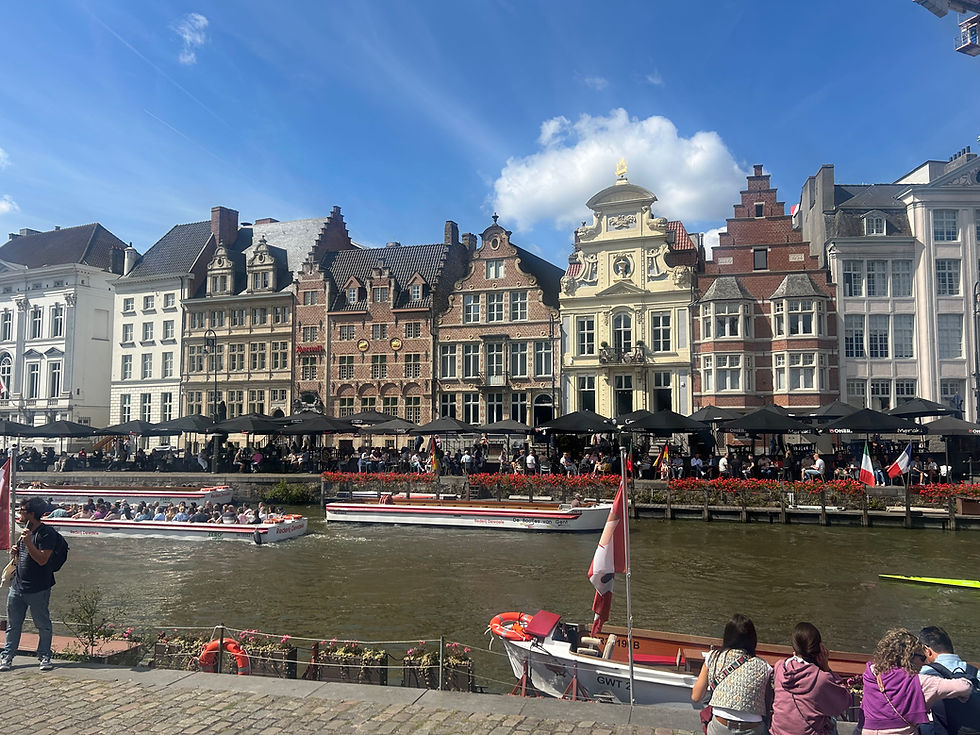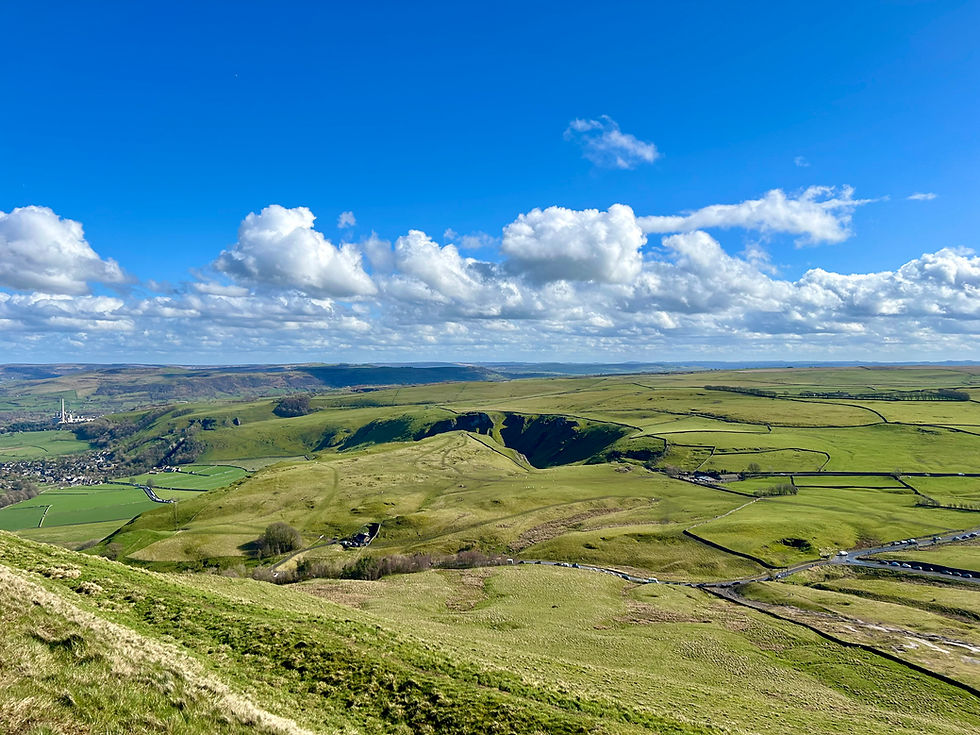Gdansk Weekend Escape
- Irene
- Dec 13, 2023
- 5 min read
Updated: Sep 1

Gdansk is without a doubt one of the prettiest cities on the Baltic Sea. This small city in the north of Poland is sometimes overlooked for bigger Polish cities like Krakow or Warsaw but in fact it is one the most charming cities we have visited in Europe. Its dimensions make it perfect for a weekend escape or even as slightly longer trip during the summer if you would like to go to one of the nearby beaches.
Gdańsk Travel Itinerary – Places to Visit
Day 1: Old Town
Green Gate
Długi Targ (Long Market)
Neptune’s Fountain
High Gate
Basilica of St. Mary (tower climb)
Royal Chapel
Mariacka Street
The Crane
Gdańsk Christmas Market
Day 2: Museums & Food Hall
Small and Large Mill
European Solidarity Centre (Solidarity Museum)
Gdańsk Christmas Market
Optional (Summer Only): Beaches
Brzeźno Beach
Jelitkowo Beach
Sopot Beach
Best time to go: in reality all year around is good for a trip to Gdansk. While the summer can be ideal if you want to visit the coast, during the winter, even though cold, iy can be great as well as you can visit the Christmas market. We went in December as we wanted to visit the Christmas Market, it was obviously cold but with the right gear it wasn’t that bad and the city covered in snow has a special charm during this time of the year.
Where to stay: near the city centre which is not very big. We stayed at ‘Hotel Grano Gdańsk Old Town’, the hotel is super new and very well decorated. The location is perfect walking distance to all the important sites and the fact that it has a spa and indoor swimming pool for the winter cold is a plus.
Day 1: Old town
If your breakfast is not included in your hotel/ accommodation, head to ‘Billy’s’ which is like an American inspired dinner. The pancakes and bagels are amazing!
After breakfast you can start walking around the city centre.
Green gate - start by the Green Gate which was inspired by the Antwerp City Hall. It was built in 1568-71 as the formal residence of Poland's monarchs. It is a masterpiece by Regnier (an Amsterdam architect), and reflects Flemish architectural influence in Gdańsk.
Dlugi targ - this is the main street of the city and where you will find the majority of points of interest. Established in about the 13th century, initially as a merchant road leading to the oval market place.
Neptune's Fountain - built between 1606 and 1633 in front of Artus’ Court on Dlugi Targ and facing towards tenement houses that were kings’ residence during their stay in Gdansk. The fountain saw major restoration works in 1927 and 1954 after the damage sustained during World War II.
High gate - This renaissance city gate was a main entry point to the city and marked the beginning of Gdansk’s Royal Route. It was built in 1588 by Willem van den Blocke and up until 1895 is was part of larger fortified structure guarding the city. Today, however, it is a stand-alone historic landmark.
Basilica of St Mary - the Basilica of St Mary is currently one of the two or three largest brick churches in the world. Here you can go up the 405 steps to the top of tower to admire the views of the city from there. It is an exhasusting climb but worth it for the views. The ticket to access the tower costs 16 PNL.
Royal Chapel - this little baroque chapel was built in accordance with the will of Andrzej Olszowski, the Primate of Poland from 1674–1677. At the time, Gdańsk and Northern Poland were in a majority-Protestant area and even the mighty St. Mary's Basilica was a place of Protestant worship. Thus, the Royal Chapel was built to service the Catholic Minority of the city. Construction began in 1678 and was wrapped up 3 years later.
Mariacka Street - bombing raids in March 1945 destroyed almost all of the buildings on Mariacka. Remarkably, a single tenement house (number 1) was not destroyed. The reconstruction of the tenement houses began in the mid-1950s and lasted until the mid-1970s. Today, you can find countless stalls selling amber – a semi-precious gemstone –.
Crane - The Crane is one of the most charactheristics symbols of the city and represents what little is left of the city’s great trading age. The original structure burnt down in 1442 before its current design was created in 1442-1444. As a working crane it was used to transfer cargoes and to put up masts on ships. It also served as a defence function and as one of the gates to the city. It remained a working crane until the middle of the 19th century and was 80% destroyed in 1945 in The Battle for Gdańsk. After the war, it was rebuilt and donated to the Polish Maritime Museum of which it remains a part of today.
Once you have finished with all the main points of sightseeing, you can go for lunch and of course try the pierogis. There are 2 very famous places; 'Pierogarnia Stary mlyn’ and 'Pierogarnia Mandu gdansk’. We tried the last one and the pierogis were incredible, however, the day we went there was a ’small’ queue compared to normal and still we had to queue for 1 hour. The queue for the first one was shorter from the outside when we passed.
In the afternoon you can either go to visit the Christmas market or chill by the swimming pool.
For dinner the recommended restaurant is 'Targ Rybny - Fishmarkt’. We loved this place! Obviously as Gdansk is near the sea their seafood and fish are really popular and very good. We ordered the salmon tartar, the trio of herring and the bouillabaisse. Everything was incredible. Booking in advance is highly recommended.








Day 2: Museum and food hall
On your second day you can go for breakfast to 'Chleb i Wino Stągiewna Gdańsk Restauracja’ - try to get there around 10 am as this is a very popular spot and the queues can be long. Be aware that the portions are quite big!
After a substantial breakfast you can make your way to less touristic part of the city that holds a couple of interesting spots:
Small and Large mill - The two Gothic Gdańsk mills, preserved to this day, despite the early modern transformations and depriving them of their original function, are one of the most important monuments of early technology in Poland.
Solidarity museum centre - The European Solidarity Centre is a museum that is dedicated to the history of solidarity and opposition movements of Communist Eastern Europe, including the Polish trade union and civil resistance movement. The museum commemorates the revolution of Solidarity and the fall of communism in Europe. It holds a collection of around 2,000 objects and includes archival objects, documents, manuscripts, photographs, video footage and interactive installations.
Montownia food hall - very close to the museum you will find the food hall where you will be able to find cuisine from different countries of the world.
In the afternoon (again) you can either visit the Christmas market or relax by the swimming pool.
For dinner, you can go to 'Gdański Bowke’, a cosy Polish restaurant where you can order pierogis, fish and also winter food like pork knuckle etc.
If you go to Gdansk in the summer… in that case I would recommend to visit the beaches during the day and then after lunch and before dinner try to do the main list of sightseeing. The best beaches in the area are: Brzeźno Beach, Jelitkowo Beach and Sopot Beach.








Comments